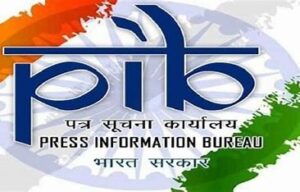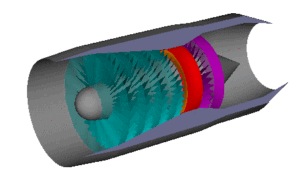Topics to be covered
- NITI Aayog report says 13.5cr. people lifted out of multidimensional poverty
- Webb space telescope
- DRDO’s propulsion system
- Cloudburst
- Bharat NCAP

1. National Multi-Dimensional Poverty Index by NITI Aayog
Main Idea
- The NITI Aayog released the ‘National Multidimensional Poverty Index: A Progress Review 2023,’ revealing a significant reduction in multidimensional poverty in India between 2015-16 and 2019-21.
What is NMPI ?
- The National Multidimensional Poverty Index (NMPI) is a tool used by NITI Aayog to assess poverty based on multiple dimensions, including health, education, and standard of living.
- NITI Aayog collaborates with publishing agencies like Oxford Poverty and Human Development Initiative (OPHI) and the United Nations Development Programme (UNDP).
- The baseline report for the NMPI is derived from the National Family Health Survey (NFHS) 4 conducted during 2015-16.
Indicators Applied
- The NMPI includes various indicators related to
- nutrition,
- child and adolescent mortality,
- maternal care,
- education level,
- school attendance,
- access to basic amenities like cooking fuel,
- sanitation, drinking water,
- electricity,
- housing conditions,
- financial inclusion with bank accounts
- ownership of assets.
Key Findings
- The key findings of the report indicate a remarkable decline in multidimensional poverty in India.
- The overall poverty rate decreased by 9.89 percentage points, going from 24.85% in 2015-16 to 14.96% in 2019-21.
- Notably, rural areas experienced the most significant progress, with multidimensional poverty declining from 32.59% to 19.28%, while urban areas saw a reduction from 8.65% to 5.27%.
- The report also highlights regional progress, where Uttar Pradesh (UP) recorded the largest decline in the number of poor individuals, with 3.43 crore people moving out of multidimensional poverty.
- States such as UP, Bihar, Madhya Pradesh, Odisha, and Rajasthan showed the fastest reduction in the proportion of multidimensional poor.
- Furthermore, the report suggests that India is making strides towards achieving Sustainable Development Goal (SDG) Target 1.2, which aims to reduce multidimensional poverty by at least half by 2030.
- This progress is indicative of the country’s commitment to address poverty from multiple dimensions and improve the well-being of its citizens.
2.James Webb Space Telescope
- The James Webb Space Telescope is a large space-based observatory that uses infrared light to study the universe.
- It was launched on December 25, 2021, and began its science operations on July 10, 2022.
- It is a joint project of NASA, ESA, and CSA.

Objectives of Webb space Telescope
- To find the first galaxies that formed in the early universe and trace their evolution over cosmic time.
- To study the birth and death of stars and the formation of planetary systems.
- To examine the physical and chemical properties of planetary atmospheres and search for signs of life.
- To observe the effects of dark matter and dark energy on the structure and expansion of the universe.
Observatory Features
- A 6.5-meter primary mirror that collects more light than any previous space telescope.
- A sunshield that protects the telescope from the heat and light of the Sun, Earth, and Moon, and keeps it at a very cold temperature of about -223°C.
- A suite of four scientific instruments that can take images and spectra in a wide range of infrared wavelengths, from 0.6 to 28.5 microns.
- An orbit around the second Lagrange point (L2) of the Sun-Earth system, about 1.5 million kilometers from Earth, that provides a stable and uninterrupted view of the sky.
First Year Highlights
- Capturing the first images of a planetary system around a Sun-like star, revealing four giant planets and a debris disk.
- Observing Saturn’s rings in unprecedented detail, showing their structure, composition, and dynamics.
- Surveying a patch of sky containing about 5,000 galaxies, some of which are among the most distant and ancient ever seen.
- Resolving the cores of two colliding galaxies that are undergoing a burst of star formation.

Related News
The Rho Ophiuchi cloud complex

- The Rho Ophiuchi cloud complex is a nearby region of interstellar clouds where stars and planets are forming.
- It is located in the constellation Ophiuchus, south of the star Rho Ophiuchi.
- It has two main parts: a star-forming cloud and a filamentary structure.
- The cloud contains hundreds of young stars, some with disks of dust and gas around them.
- The filaments are long and thin streams of material that connect the cloud to other parts of the galaxy.
- The Rho Ophiuchi cloud complex is a beautiful and fascinating example of how the universe creates new worlds.
3. DRDO’s Propulsion System
Introduction
- One of the key areas of DRDO’s research is propulsion technologies, which enable various platforms such as missiles, rockets, aircrafts, submarines and vehicles to move and maneuver.
What is Propulsion System ?
A propulsion system is a machine that produces thrust to push an object forward.

Types of Propulsion Technologies
DRDO has developed various types of propulsion technologies for different applications and requirements. Some of the major types are:
Solid Propulsion:
- This involves using solid propellants that are ignited to produce thrust.
- Solid propellants are easy to store, transport and handle, but have limited performance and flexibility.
- DRDO has developed solid propellants for various missiles, rockets and guns.
Liquid Propulsion:
- This involves using liquid propellants that are pumped into a combustion chamber where they are mixed and burned to produce thrust.
- Liquid propellants offer higher performance and flexibility, but require complex systems and infrastructure.
- DRDO has developed liquid propellants for various rockets and missiles.
Air Breathing Propulsion:
- This involves using the atmospheric air as the oxidizer for the fuel, instead of carrying it onboard.
- Air breathing propulsion offers higher efficiency and range, but requires high speed and temperature.
- DRDO has developed air breathing propulsion systems such as ramjet, scramjet and turbojet for various missiles and aircrafts.
Electric Propulsion:
- This involves using electric power to accelerate a propellant or a plasma to produce thrust.
- Electric propulsion offers low thrust but high specific impulse, which means it can achieve high speeds with less propellant.
- DRDO has developed electric propulsion systems for various satellites and airships.
Examples of Propulsion Technologies
| Technology | Description | Application |
| Air Independent Propulsion (AIP) System | A marine propulsion technology that allows non-nuclear submarines to operate without accessing atmospheric oxygen through snorkelling or surfacing. It is based on a Phosphoric Acid Fuel Cell that converts hydrogen and oxygen into electricity and water. | P75 submarines |
| Solid Fuel Ducted Ramjet (SFDR) | A missile propulsion technology that uses a solid fuel in a ducted ramjet engine that can vary the thrust by controlling the fuel flow rate | Long range air-to-air missiles |
| Small Turbo Fan Engine (STFE) | A gas turbine engine that uses a fan to compress the air before entering the combustion chamber. It offers high specific power and compactness. | Air launched cruise missiles, unmanned combat air vehicles |
| Surface Tension based Propellant tanks | A liquid propellant tank design that uses surface tension to prevent the propellant from sloshing or moving inside the tank. It improves the stability and accuracy of the vehicle. | Liquid upper stage rocket engine |
4. Cloudburst
Definition :A cloudburst is an extreme amount of precipitation in a short period of time, sometimes accompanied by hail and thunder, which is capable of creating flood conditions.
Causes
- Cloudbursts are mostly caused by an excessive amount of condensation in the clouds during a thunderstorm.
- In these storms, there are violent uprushes of air, which at times prevent the condensing raindrops from falling to the ground.
- Cloudbursts can also occur when hot water vapor mingles with cold air, resulting in sudden condensation.
Characteristics
- Cloudbursts can quickly dump large amounts of water, e.g. 25 mm of the precipitation corresponds to 25,000 metric tons per square kilometre .
- Cloudbursts result in a condition where there is torrential downpour accompanied by hail and thunder.
- The associated convective cloud can extend up to a height of 15 kilometres (9.3 mi) above the ground.
Effects
- Cloudbursts are responsible for flash floods, landslides, soil erosion, and damage to crops and property. Kedarnath Disaster
- Cloudbursts are especially common in mountainous areas, where the warm air currents of a thunderstorm tend to follow the upward slope of a mountain.
- The effects of heavy rain are especially striking on mountain slopes because the falling water is concentrated in valleys and gulleys.
Prevention and Mitigation
- Although it is difficult to forecast cloudbursts, doppler radars can be helpful in predicting them.
- A doppler radar is a specialised radar that uses the Doppler effect to produce velocity data about objects at a distance.
- It does this by bouncing a microwave signal off a desired target and analyzing how the object’s motion has altered the frequency of the returned signal.
- However, not all of the regions prone to cloudbursts have a doppler radar network.
Therefore, it is important to take precautionary measures such as avoiding low-lying areas, moving to higher grounds, staying away from rivers and streams, and following the instructions of local authorities during heavy rainfall.
5. Bharat NCAP

Why in News ?
India is preparing to introduce its very own Bharat New Car Assessment Programme (NCAP) for four-wheelers, commencing from 1st October.
The primary objective behind this initiative is to enhance car safety standards and raise consumer awareness regarding the safety features of vehicles.
What is BHARAT NCAP ?
- Bharat NCAP (BNCAP) is a safety evaluation program specifically designed for passenger vehicles with a weight below 3.5 tonnes and a seating capacity of up to eight individuals.
- Its purpose is to align India with other international regions, such as the US, Europe, Japan, Australia, and Latin America, where similar NCAPs exist.
- The main goal of the Bharat NCAP is to foster transparency, raise consumer awareness, and empower car buyers to make well-informed decisions by considering the safety credentials of vehicles.
Significance of BNCAP
- Consumer Awareness: BNCAP provides consumers with clear indications of the level of protection offered to occupants, including adult occupant protection, child occupant protection, and safety assist technologies.
- Promoting Safer Cars: By serving as a consumer-centric platform with Star Ratings, BNCAP empowers customers to choose safer vehicles while encouraging manufacturers to prioritize safety in their designs.
- Enhanced Safety and Export Potential: The program ensures structural and passenger safety in cars, making Indian automobiles more competitive in the global market and increasing their export potential.
- Aatmanirbhar Initiative: Aligning with the Indian government’s goal of promoting self-reliance in the automobile industry, BNCAP aims to improve safety standards in domestically produced cars.
Significance of crash-testing vehicles in India
- Road Crash Burden: India has a disproportionately high percentage of global road crash fatalities, necessitating improved safety standards for vehicles.
- Existing Testing Standards: While India’s Central Motor Vehicle Rules (CMVR) mandate safety assessments, including basic conformity crash tests, they lack crash test ratings. This has resulted in some international automakers selling vehicles with lower safety ratings to cut costs.
- Changing Purchase Criteria: Safety considerations are becoming increasingly influential in Indian car buyers’ decisions, emphasizing the need for better safety standards.
The expected performance of Indian cars under BNCAP
- Progress in Crash Testing: Global NCAP has been conducting crash tests on Indian cars since 2014, and significant progress has been observed in recent years.
- Star Ratings Achieved: While older cars scored poorly, newer cars have achieved 5-star ratings for adult safety, indicating an improvement in safety features and design.
- Easier and Cost-Effective Testing: With testing centers equipped in Pune, Manesar, and Indore, manufacturers can conduct crash tests more easily and at a lower cost in India.
- Leveraging Star Ratings: BNCAP’s implementation is expected to encourage more manufacturers to seek star ratings for their vehicles, enhancing their market position based on safety credentials.
Conclusion
Bharat NCAP’s significance lies in its potential to enhance safety standards in Indian vehicles, promote consumer awareness, and align with global safety standards.
By encouraging automakers to voluntarily undergo safety assessments, it aims to make Indian automobiles safer, more competitive in international markets, and boost the country’s export potential.

